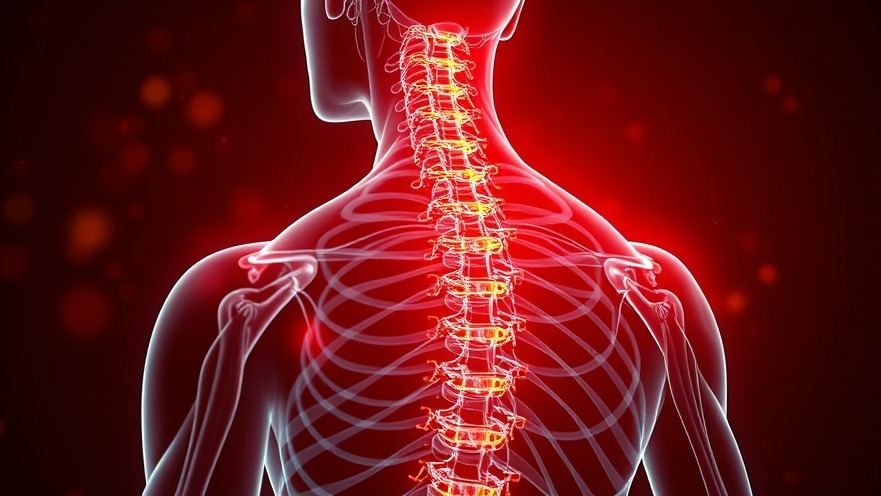
Revolutionizing Spinal Cord Injury Treatment with Nerve Stimulation
The latest research from the Texas Biomedical Device Center at the University of Texas at Dallas may alter the landscape of spinal cord injury rehabilitation. In a pioneering clinical study, researchers demonstrated notable recovery cases in patients with incomplete spinal cord injuries through a combination of closed-loop vagus nerve stimulation (CLV) and personalized rehabilitation exercises.
Understanding Closed-Loop Vagus Nerve Stimulation (CLV)
The CLV technology utilizes a compact device implanted in the neck, roughly the size of a dime, which transmits electrical pulses to the brain. During the therapeutic process, these pulses are synchronized with specific rehabilitation exercises, creating a feedback loop that enhances physical movement and encourages neural reorganization. This innovative approach not only aligns with a decade of dedicated neuroscience research but also represents a significant departure from traditional rehabilitation methods that focus solely on therapy without technological support.
Groundbreaking Results from Clinical Trials
Published in Nature, the study conducted by UT Dallas involved 19 participants diagnosed with chronic, incomplete cervical spinal cord injuries. Over a span of 12 weeks, individuals engaged in therapeutic exercises designed to simulate upper-limb functions, such as playing simple video games tailored to encourage specific movements. Remarkably, upon successful execution of movements, the device would trigger stimulating pulses, promoting recovery in arm and hand strength.
Dr. Michael Kilgard, a key figure in this research, emphasized that unlike stroke rehabilitation, where traditional therapies yield some improvement, spinal cord injury patients showed no progress with conventional physiotherapy alone. The innovative CLV method created a pathway for recovery where there was previously none, marking a breakthrough in treatment efficacy.
Customized Rehabilitation: A Game Changer for Patients
One significant aspect of this study is its focus on personalized rehabilitation strategies for each patient, initially assessed using the GRASSP profile. This approach tailors the rehabilitation exercises to fit the unique capabilities and needs of individual patients, ensuring they receive optimal support throughout their recovery journey.
Dr. Robert Rennaker, another contributor to this remarkable study, pointed out that these exercises simplify daily living while enabling patients to regain vital abilities—strength, speed, and range of motion in their hands. These enhancements not only improve medical outcomes but could dramatically elevate the quality of life for patients dealing with upper-limb impairments.
Implications for Future Treatment Options
The outcomes from the UT Dallas study not only pave the way for subsequent pivotal trials but also signal a turning point for FDA approval processes surrounding new medical devices aimed at treating spinal cord injuries. As nerve stimulation methodologies continue to evolve, practitioners in the healthcare field must stay informed to adapt and implement these potential treatments within their practice quickly.
Key Takeaways for Health Practitioners
For concierge health practitioners, these advancements present an essential opportunity to enhance their patients' rehabilitation experiences. By integrating closed-loop vagus nerve stimulation processes into their practice, healthcare professionals can offer cutting-edge treatments that promise better recovery rates. Keeping pace with emergent studies also enables practitioners to foster trust and credibility with patients, as they showcase their commitment to innovative solutions.
The integration of advanced technology like CLV creates a ripple effect in how rehabilitation is conceived, with lasting impacts on patient care. Investing in knowledge around these groundbreaking advancements not only uplifts the standard of care but also reinforces a proactive approach to patient health and recovery.
Call to Action: Stay Informed and Adapt
As the field of rehabilitation medicine continues to change, it’s crucial for health practitioners to stay abreast of these innovations in medical technology. Engage with new findings regularly and consider how their application can uplift your patients' recovery processes. Embrace the future of spinal injury rehabilitation and be a part of the change that improves lives.
 Add Row
Add Row  Add
Add 




Write A Comment